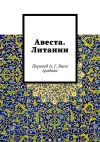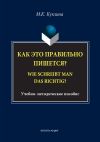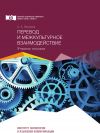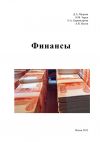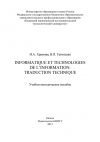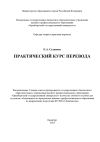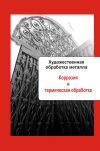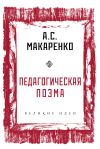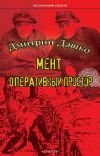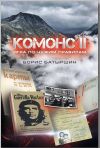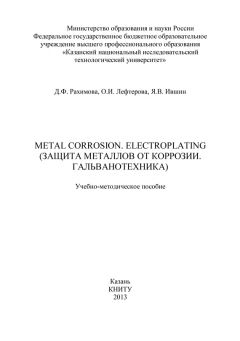
Автор книги: Я. Ившин
Жанр: Педагогика, Наука и Образование
сообщить о неприемлемом содержимом
Текущая страница: 2 (всего у книги 9 страниц) [доступный отрывок для чтения: 2 страниц]
Unit 3
MICROBIOLOGICAL CORROSION
1 . Read the international words, guess their meanings and give the Russian equivalents.
Microbiological, structural, industrial, process, microbes, biological, organism, aqueous, potential, transport, role, bacteria, anaerobic, aerobic, typical, thiobacillus, localize.
2 . Read and translate the following verbs.
To transport, to ensue, to cause, to occur, to tend, to determine, to deliver, to present, to decrease, to increase, to manifest, to settle, to be based, to engender, to reduce, to create, to operate, to perform, to penetrate, to consume, to thrive.
3 . Match the English phrases from column A with the Russian phrases in column B.

4. Read and translate the text. Summarize it in Russian.
Microbiological corrosion (MIC) refers to corrosion and ensuing loss of metal caused by biological organisms. MIC can occur in any aqueous environments and because of the present nature of microbes in fluid systems. MIC is a commonly occurring phenomenon. MIC is a common problem in industrial processes due to the presence of microbes, adequate nutrients and corrosive byproducts.
A number of metals, such as structural steels, copper alloys etc., tend to corrode generally over the entire surface in the absence of crevices or galvanic effects. In such cases, corrosion is determinated by the rate at which dissolved oxygen can be delivered to the metal surface. Biological organisms present in the aqueous medium often have the potential to increase or decrease oxygen transport to the surface; consequently, these organisms have a role in increasing or decreasing general corrosion. Most MIC, however, manifests as localized corrosion because most organisms do not form in a continuous film on the metal surface. Microscopic organisms also tend to settle on metal surfaces in the form of discrete colonies or at least spotty, rather than continuous films. Biological organisms fall under two groups based on the type of corrosion they engender: (a) anaerobic corrosion (b) aerobic corrosion. Sulfate reducing bacteria (SRB) from the genera desulfovibrio are a typical example of anaerobic MIC. Aerobic sulfur oxidizing bacteria of the type thiobacillus can create an environment of up to 10 percent sulfuric acid, thereby encouraging rapid corrosion.
(From www.clihouston.com).
5 . Read the text again. Decide whether the following statements are true or false.
1. Microbiological corrosion (MIC) refers to corrosion and ensuing alteration of metal surface caused by biological organisms.
2. Most MIC is defined as limited corrosion because most organisms do not form in a continuous film on the metal surface.
3. The type thiobacillus can form an environment of up to 70 percent ferrum acid.
6 . Work in pairs. Translate the following text from English into Russian.
MIC is not caused by a single microbe, but is attributed to many different microbes. These are often categorized by common characteristics such as by-products (i.e., sludge producing) or compounds they effect (i.e. sulfur oxidizing). In a general sense, they all fall into one of two groups based upon their oxygen requirements; one being aerobic (requires oxygen) such as sulfur oxidizing bacteria, and the other being anaerobic, (requires little or no oxygen), such as sulfate reducing bacteria.
General corrosion affects the entire surface or at least the wetted surface. MIC, on the other hand, is very localized. It creates a nodule and a pit beneath the nodule. There can be only a few nodules or there can be many. Within these nodules microbes rarely work alone but operate as a mixed community of differing types and groups. The different microbes perform different functions within the community. This interaction allows a community to thrive in environments that are actually hostile to some of its members. For example, in an aerobic environment, anaerobic bacteria are generally inhibited or killed. But within a community the aerobic bacteria reside in the outer layer of the nodule consuming the oxygen in the water as it penetrates the nodule. Thus, the inner portion of the nodule experiences a reduced oxygen level allowing anaerobic bacteria to thrive.
7.Read the text. What is its main idea?
Почва является вместилищем необычайно обильной и разнообразной микрофлоры, представленной многочисленными группами бактерий, плесневыми грибками, дрожжевыми организмами и т. п.
Количество разнообразных бактерий, приходящееся на 1 грамм почвы, достигает сотен миллионов, а иногда и десятков миллиардов. Основная масса микроорганизмов встречается в верхних горизонтах почвы, однако и в подпочвенных слоях они содержатся в значительном количестве. В некоторых случаях эти организмы могут вызывать интенсивную коррозию, получившую наименование микробиологической коррозии.
Действие микроорганизмов сводится или к непосредственному влиянию на скорость анодной и катодной реакций, или к созданию коррозийной среды.
Наибольшее значение и распространение в почвенных условиях имеет анаэробная коррозия.
Коррозионный процесс в анаэробных условиях заключается в том, что благодаря жизнедеятельности микроорганизмов в среде, окружающей подземное сооружение, сульфаты восстанавливаются и преобразуются в сероводород. Последний взаимодействует с железом, образуя сернистое железо. Освободившийся при восстановлении сульфатов кислород обеспечивает деполяризацию катода, на котором должен накапливаться водород в связи с растворением железа. Таким образом, через катодную деполяризацию бактериальный процесс стимулирует развитие коррозии.
(From www.groont.com).
8 . Work in pairs. Interpret the following passage sentence by sentence.
Corrosion resulting from the attachment and activities of microorganisms on metal surfaces is referred to as microbiologically influenced corrosion (MIC) or biocorrosion. It occurs in diverse environments and is not limited to aqueous submerged conditions, but also takes place in humid atmospheres. It is an electrochemical process in which the participation of microorganisms is able to initiate, facilitate, or accelerate the corrosion reactions without changing the process’s electrochemical nature. MIC is a result of interactions that are often synergistic between the metal surface, abiotic corrosion products, and microbial cells and their metabolites. The latter includes organic and inorganic acids and volatile compounds, such as ammonia and hydrogen sulfide. Microbiologically mediated reactions do not result in a unique type of corrosion, but they can induce localized corrosion, change the rate of corrosion and also inhibit corrosion.
Most MIC studies have focused on bacterial involvement; however, under aerobic conditions, other single-celled organisms, such as fungi, yeast and diatoms, can influence corrosion. The predominant types of bacteria associated with MIC are sulfate-reducing bacteria (SRB), sulfur-oxidizing bacteria, iron-oxidizing/reducing bacteria, manganese oxidizing bacteria, and bacteria secreting organic acids and slime. These organisms coexist within a biofilm matrix on metal surfaces, functioning as a consortium in a complex and coordinated manner. The various mechanisms of biocorrosion reflect the variety of physiological activities carried out by these different types of microorganisms when they coexist in biofilms. Despite decades of study on MIC, it is still not known with certainty how many species of microorganisms contribute to corrosion, and researchers continue to report on the formation of biofilms by an ever-widening range of microbial species.
9 . Give English equivalents to the following word combinations and learn them by heart:
деятельность микроорганизмов
различные среды
электрохимический процесс
органическая кислота
металлическая поверхность
сероокисляющие бактерии
образование биопленок
микробные виды
аэробные условия
синтетическая коррозия
10 . Give Russian equivalents to the following word combinations and learn them by heart:
inhibit corrosion
entire surface
organic acid
hydrogen sulfide
manganese oxidizing bacteria
predominant type
biofilm matrix
physiological activities
11 . Translate the following sentences into Russian.
1. Some bacteria can directly reduce metal atoms to ions.
2. Hydrogen ions are produced, along with hydroxyl ions, by the breakdown of water, and the electrons to form atomic hydrogen from the hydrogen ion are produced by the oxidation of atomic iron.
3. The source of electrons is the oxidation of the metal while the electron sink is reduction of hydrogen ions.
4. MIC has been observed as one of the major causes of underground pipeline corrosion.
5. Sulphate reducing bacteria (SRB) have been reported to be responsible for extensive corrosion in hydrocarbon industry.
6. There are other types of corrosion-enhancing bacteria such as iron-reducing bacteria, iron-oxidizing bacteria, nitrifying bacteria, methanogenic bacteria and so on.
7. New technologies that may assist mitigation are basically based on using certain biological technologies (such as use of “good” bacteria against corrosion-related bacteria).
8. Almost all known engineering materials (from carbon steel to stainless and duplex stainless steels and also non-ferrous metals such as copper alloys and non-metals such as some polymers and concrete) are susceptible to MIC.
9. Gas velocity and temperature in the pipeline play a significant role in determining if and where corrosion damage may occur.
10. Accelerated Low Water Corrosion (ALWC) is a particularly aggressive form of MIC that affects steel piles in seawater near the low water tide mark.
12 . Translate the following sentences into English.
1. Биокоррозия (от греч. bios – жизнь и позднелат. corrosio – разъедание) – разрушение конструкционных материалов и противокоррозионных защитных покрытий под действием присутствующих в среде микроорганизмов (бактерий, грибов, водорослей, дрожжей).
2. Биокоррозия подразделяется на бактериальную и микологическую.
3. Наиболее опасными микроорганизмами являются бактерии, так как они быстро размножаются и легко приспосабливаются к условиям окружающей среды.
4. Благоприятными условиями для развития плесени является температура 25–35 °C и повышенная влажность воздуха, превышающая 75 %.
5. В процессе жизнедеятельности микроорганизмов образуются продукты обмена веществ, повышающие коррозионную активность среды (минеральные и органические кислоты, щелочи, пероксиды и др.)
6. Алюминиевые сплавы – одни из наиболее устойчивых к коррозии конструкционных материалов. Однако и они подвержены биокоррозии.
7. Биокоррозия металлов может быть вызвана действием сульфатовосстанавливающих бактерий.
8. Предполагается, что бактерии замещают и поглощают водород, образуя очаги, на анодных участках которых происходит усиленная коррозия металла.
9. Анаэробная коррозия приносит огромный ущерб нефтегазовой промышленности (трубопроводы, емкости для хранения и транспорта нефтепродуктов).
10. Для объяснения процесса коррозии в анаэробных условиях Кюр и Флюгт предложили следующие реакции: анодную, катодную, катодную деполяризацию при участии бактерий, образование продуктов коррозии.
13 . Translate the following word combinations.
Cульфатовосстанавливающие бактерии – stainless steel – скорость потока газов – hydrogen sulfide – органические кислоты – suitable environments – аэробные условия – proliferate – медные сплавы – high humidity – полимеры – structural materials – минеральные кислоты – single-celled organisms – катодная деполяризация – formation of biofilms.
14 . Give the definitions of the words and word combinations.
1. Microbe is …
2. Sludge is …
3. Microbial flora is…
4. Velocity is …
5. Synergetics is …
15 . Give the example(s) of the microbial corrosion.
16 . Answer the following questions using texts from Unit 3.
1. What does microbial corrosion mean?
2. What types of microbiological corrosion do you know?
3. What are the predominant types of bacteria associated with microbial corrosion?
4. Describe anaerobic corrosion.
17 . Summarize the general ideas developed in all the texts of the Unit 3.
Unit 4
ATMOSPHERIC CORROSION
1 . Read the international words, guess their meanings and give the Russian equivalents.
Temperature, atmospheric, industry, salt, characterize, system, chloride, aggressive, factor, material, sulphide, synergistic, parameter, conventional, function, manner, transferable.
2 . Read and translate the following verbs.
To classify, to attack, to expose, to increase, to promote, to contain, to contribute, to influence, to suffer, to comprise, to lead to, to correlate, to restrict, to find, to transfer, to know.
3 . Match the English phrases from column A with the Russian phrases in column B.

4 . Read and translate the text. Summarize it in Russian.
Atmospheric corrosion accounts for more failures on both a tonnage basis and cost basis than any other type of environmental corrosion. Tremendous amounts of steel in automobiles, bridges ad buildings are exposed to the atmosphere and attacked by oxygen and water. The corrosion severity is increased when salt, sulfur compounds and other atmospheric contaminants are present. Atmospheric environments can be classified as: industrial, marine, rural, indoor.
Industrial environments contain sulfur compounds, nitrogen compounds, and other acidic agents that can promote the corrosion of metals. In addition, industrial environments contain a heavier loading of airborne particles, which also contribute to corrosion. Marine environments are characterized by the presence of chloride, an ion that is particularly detrimental to the corrosion behavior of many metals systems. Rural environments are the least corrosive of the atmospheric environments, being characterized by lower levels of acidic compounds and other aggressive species.
The principal factors influencing atmospheric corrosion for a given metal are moisture, temperature and the presence of contaminants in the environment. (From www.researchgate.net).
5 . Read the text again. Decide whether the following statements are true or false.
1. Urban environments are the least corrosive of the atmospheric environments.
2. The main factors influencing atmospheric corrosion for a given metal are pressure, velocity and temperature and the presence of contaminants in the environment.
3. Marine environments are characterized by the presence of copper and sulphur.
4. Atmospheric environments can be classified as: urban, marine and rural.
6 . Work in pairs. Translate the following sentences from English into Russian.
The term “atmospheric corrosion” comprises the attack on metal exposed to the air as opposed to metal immersed in a liquid. Atmospheric corrosion is the most prevalent type of corrosion for common metals.
Atmospheric corrosion is a subject of global concern because of its importance to the service life of equipment and durability of the structural materials. While there is a general agreement on the possible types of parameters that may lead to corrosion, these studies suffer severely from the lack of generality in the sense that their predictive capability is extremely poor. Conventional atmospheric parameters that may lead to metal corrosion comprise of weathering factors such as temperature, moisture, rainfall, solar radiation, wind velocity, etc. Air pollutants such as sulphur dioxide, hydrogen sulphide, oxides of nitrogen, chlorides have also been found to contribute to atmospheric corrosion. The complexity and diverse nature of the atmospheric pollutants make the prediction of the atmospheric corrosion difficult. The synergistic interaction of the variables must also be considered in the model for arriving at a definite solution. A direct approach to the problem is to measure the observed corrosion rates and the participating atmospheric parameters and correlate them. The correlation equations, thus derived, are known as damage functions and they have been found to be extremely useful, though in a restricted manner, as the results are not easily transferable from one place to another.
7 . Read the text. What is its main idea?
Особенностью атмосферной коррозии является возможность свободного подхода кислорода к корродирующей поверхности. Это обусловлено малой толщиной пленки и за счет конвекции перемешивания электролита. Именно поэтому даже в подкисленных электролитах атмосферная коррозия протекает с кислородной деполяризацией.
Также из-за тонкого слоя влаги на поверхности корродирующего металла анодный процесс идет с затруднением, а протекание катодного, наоборот, облегчается.
При работе гальванопар (galvanic couple) небольшая толщина пленки влаги тоже играет свою роль – увеличивается омическое сопротивление электролита.
Атмосферная коррозия сплавов, в основу которых входит железо (например, сталь), протекает с анодно-катодно-омическим контролем. Но в зависимости от некоторых условий (толщина, электропроводность пленки влаги, ее состав, природа металла) анодно-катодно-омический контроль может переходить в преимущественно анодный, преимущественно катодный или омический. (From www.okorrozii.com).
8 . Work in pairs. Interpret the following passage sentence by sentence.
The most common characteristic of metallic atmospheric corrosion is the localized character of its nucleation. Preferential nucleation sites depend on the metal structure and are associated to the presence of different phases or environmental pollutants on discrete areas of the metallic surface. In the case of carbon steel, nucleation starts with the formation of small protuberances of corrosion products at isolated points on the metallic surface, followed by the formation of a large number of corrosion product nuclei that can cover the entire surface after relatively short exposure times.
9 . Give English equivalents to the following word combinations and learn them by heart:
скорость коррозии
коррозийный процесс
сырость внешних конструкций
коррозия в металлах
химическая активность углеродной стали
атмосферная коррозия меди
агрессивные среды
анодный процесс
прогнозируемость атмосферной коррозии
10 . Give Russian equivalents to the following word combinations and learn them by heart:
galvanic couple
ohmic control
cathodic process
electric conductivity
atmospheric pollution
fossil fuels
combustion products
metal surface
oxide film
11 . Translate the following sentences into Russian.
1. Predictability of atmospheric corrosion, in principle, should be based upon the complete understanding of the corrosion process and interdependence of the contributing parameters.
2. Grossman has investigated the atmospheric factors which determined the time of wetness of the outdoor structures.
3. In polluted atmospheres, chlorides and SO2 are the common pollutants influencing metallic corrosion.
4. Among the factors affecting the type and amount of atmospheric corrosion products, the main role is played by the reactivity of carbon steel.
5. The general sequence of atmospheric corrosion of copper is well known.
6. Atmospheric corrosion can be classified into dry, damp and wet categories.
7. Principal corrosives consist of moisture, relatively small amounts of sulfur oxides, and carbon dioxide from various combustion products.
8. The most potent causes of corrosion in industrial environments are the sulfur oxides and nitrogen oxides produced by the burning of automotive fuels and fossil fuels in power stations.
9. The critical relative humidity, above which metals corrode, drops to about 60 percent when these airborne pollutants are deposited on the metal surface.
10. A fundamental requirement for electrochemical corrosion processes is the presence of an electrolyte.
12 . Translate the following sentences into English.
1. Скорость коррозии и вид коррозионного разрушения зависят от природы металла, влажности, загрязненности атмосферы.
2. Загрязнение атмосферы газами, пылью резко ускоряет коррозию.
3. При образовании фазовых пленок в области мокрой коррозии затруднятся доставка кислорода и наблюдается катодное торможение процесса.
4. Стойкость металлов к атмосферной коррозии зависит от их химической природы и состояния поверхности.
5. Наличие узких щелей и зазоров, в которых возможны капиллярная конденсация и застой влаги, усугубляют атмосферную коррозию и могут привести к образованию коррозионных язв.
6. При относительной влажности, близкой к 100 %, или при непосредственном увлажнении металла (дождь, туман) на поверхности происходит образование видимых фазовых слоев воды.
7. Рост оксидной пленки происходит в первые секунды и минуты.
8. Предельная толщина пленок на железе 30-40 А, на нержавеющих сталях – 10-20 А.
9. Анодный процесс осложняется тем, что продукты коррозии экранируют поверхность металла.
10. Загрязнение атмосферы газами, пылью резко ускоряет коррозию. Это явление наблюдают в промышленных центрах, особенно в присутствии в воздухе SO2, NH3, H2S,C12, HCl.
13 . Translate the following word combinations.
Anodic process – продукты коррозии – industrial cluster – оксидная пленка – oxygen depolarization – продукты горения – wind velocity – корродирующий металл – sulphur oxide – функции ущерба – corrosive surface – экранировать поверхность металла – chemical nature – оксидная пленка – nucleation site – предельная толщина – atmospheric pollutant – загрязнение газами – carbon oxides – коррозионные язвы – relative humidity.
14 . Give the definitions of the words and word combinations.
1. Radiation is …
2. Condensation is …
3. Humidity is …
4. Pressure is …
5. Convection is …
1 5 . Give the example(s) of the atmospheric corrosion.
16 . Answer the following questions using texts from Unit 4.
1. What is the definition of atmospheric corrosion?
2. What may cause atmospheric corrosion?
3. Name the principal factors of atmospheric corrosion.
4. What do industrial environments contain?
17 . Summarize the general ideas developed in all the texts of the Unit 4.
Внимание! Это не конец книги.
Если начало книги вам понравилось, то полную версию можно приобрести у нашего партнёра - распространителя легального контента. Поддержите автора!